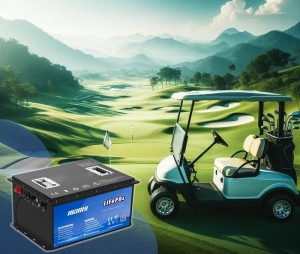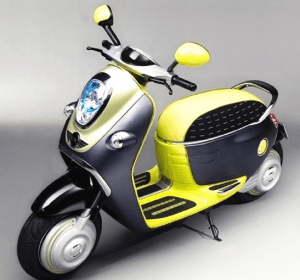Quante batterie al litio per alimentare un inverter da 5KW
Sommario
- Quante batterie al litio per alimentare un inverter da 5KW
- Ruolo delle batterie al litio nei sistemi di energia solare
- Come calcolare il numero di batterie al litio necessarie
- Fattori che influenzano l'utilizzo della batteria
- Configurazione del banco batterie per un inverter da 5KW
- Vantaggi delle batterie al litio per sistemi solari
- Di quante batterie solari ho bisogno per 12 ore di potenza (inverter da 5000 W)?
- Conclusione
- Ulteriori informazioni sulla batteria

Ruolo delle batterie al litio nei sistemi di energia solare
In a solar power setup, the lithium batteries act as the intermediary between the solar panels and the home’s electrical system. During the day, when the sun is shining, solar panels generate electricity, but energy demand is often higher in the evening when sunlight is no longer available. The batteries store the energy generated during the day for use at night. Lithium batteries are ideal for this purpose because they have a high energy density, meaning they can store more power in a smaller space compared to traditional lead-acid batteries.Come calcolare il numero di batterie al litio necessarie
To determine how many lithium batteries are needed for a 5kw inverter, you must first understand the relationship between power (watts), voltage (volts), and current (amps). The power formula is: Watt = Volt × AmpereAd esempio, un inverter da 5000 W funzionante su un sistema a 48 V richiede circa 104 amp (5000 watt ÷ 48 volt = 104 amp). Se prevedi di far funzionare il sistema ininterrottamente per un'ora, avrai bisogno di batterie al litio in grado di fornire almeno questa quantità di corrente.Step 1: Determine the System's Voltage
Most 5kw inverters are designed to operate at 48V because this voltage is more efficient for larger power demands. A 48V system reduces the number of lithium batteries required compared to a 12V or 24V system.Passaggio 2: calcolare gli ampere-ora (Ah) necessari
Once you know the voltage, the next step is to calculate how many amp-hours (Ah) your batteries need to supply. This depends on how long you plan to run your system on battery power. For example, if you plan to run the inverter for four hours, the calculation would look like this:5000 watt × 4 ore = 20.000 wattora 20.000 wattora ÷ 48 volt = 416,67 AhCiò significa che avresti bisogno di batterie al litio in grado di fornire almeno 416,67 ampere di capacità per quattro ore di uso continuo.Passaggio 3: scegli la dimensione giusta della batteria
Let’s assume you're using a 48v 200Ah lithium battery. To supply the required 416.67Ah, you would need at least three of these batteries. The formula for this is:Numero totale di batterie = Ah richiesto ÷ Ah batteriaIn this case: 416,67 Ah ÷ 200 Ah = 2,08 batteriePoiché non è possibile utilizzare una frazione di batteria, sarebbero necessarie almeno tre batterie al litio per soddisfare la domanda del tuo inverter da 5 kW per quattro ore.Fattori che influenzano l'utilizzo della batteria
Several factors can influence how many lithium batteries you need. These include the inverter’s efficiency, the type of appliances you are powering, and the depth of discharge (DoD) of the batteries. Lithium batteries generally have a higher DoD compared to lead-acid batteries, meaning they can safely be discharged up to 80% of their total capacity without damage. This feature makes lithium batteries a more reliable and efficient choice for solar power systems.Efficienza dell'inverter
The inverter’s efficiency determines how much energy is lost during the conversion from DC (direct current) to AC (alternating current). A highly efficient inverter will require fewer batteries to store the same amount of energy.Domanda di energia degli elettrodomestici
If you are powering energy-hungry devices like refrigerators or air conditioners, you will need more lithium batteries than if you are powering lights and small electronics. Devices with high peak power demands, such as electric motors, can briefly require more power than their rated wattage during startup, so it’s important to account for this when calculating the number of batteries.Configurazione del banco batterie per un inverter da 5KW
When setting up a battery bank to power a 5kw solar inverter, it’s essential to understand how to arrange the lithium batteries to achieve the necessary system voltage and capacity. Most 5kw inverters operate on 48V systems, which means you’ll need to configure your battery bank to match this voltage.Connessioni in serie e parallele
There are two primary ways to connect lithium batteries in a solar power system: series and parallel. The choice between these configurations depends on whether you need to increase the system’s voltage or capacity.- Collegamento in serie: Il collegamento delle batterie in serie aumenta la tensione mantenendo la stessa capacità (amp-ora). Ad esempio, collegando quattro batterie al litio da 12 V, 100 Ah in serie si otterrà un sistema da 48 V con una capacità di 100 Ah. Questo è l'ideale per un inverter da 48 V come il modello da 5 kW.
- Connessione parallela: Il collegamento delle batterie in parallelo aumenta la capacità (Amp-ora) mantenendo la stessa tensione. Ad esempio, se ne colleghi quattroBatterie da 48V 100Ahin parallelo avrai un sistema a 48V con una capacità di 400Ah. Ciò è utile quando è necessario estendere il tempo di esecuzione del sistema.
Vantaggi delle batterie al litio per sistemi solari
Lithium batteries offer several advantages over traditional lead-acid batteries, making them the ideal choice for solar power systems, especially those using a 5000W inverter. Some key benefits include:- Maggiore densità di energia: Le batterie al litio possono immagazzinare più energia in uno spazio più piccolo, il che è fondamentale quando lo spazio è limitato.
- Durata della vita più lunga: Le batterie al litio in genere durano più a lungo delle batterie al piombo-acido, con alcuni modelli in grado di durare fino a 10 anni o più con la dovuta cura.
- Ricarica più veloce: Le batterie al litio possono essere caricate molto più velocemente rispetto alle alternative al piombo-acido, il che è vantaggioso quando si massimizza l'uso dell'energia solare.
- Maggiore profondità di scarica (DoD): Le batterie al litio possono scaricare in sicurezza fino all'80% della loro capacità, mentre le batterie al piombo sono limitate a circa il 50%, consentendo un uso più efficiente dell'energia immagazzinata.
- Bassa manutenzione: A differenza delle batterie al piombo, le batterie al litio non richiedono una manutenzione regolare, come l'aggiunta di acqua o la pulizia dei terminali.
Di quante batterie solari ho bisogno per 12 ore di potenza (inverter da 5000 W)?
The number of lithium batteries to supply a 5kw inverter depends on your energy usage and the duration you want the system to run on battery power alone. A basic calculation, as mentioned earlier, involves determining the total energy (in watt-hours) your system will consume, and then dividing that by the voltage and depth of discharge of your batteries.Calcolo di esempio per un uso prolungato
If you need to power your system for 12 hours, and you estimate your home’s energy consumption is around 5000W per hour, the total energy requirement is:5000 W × 12 ore = 60.000 wattora (Wh)Utilizzando una batteria al litio da 48 V 200 Ah con un DoD dell'80%, il numero totale di batterie necessarie è:- Convertire i wattora in ampere-ora: 60.000Wh ÷ 48V = 1250Ah
- Conto per il Dipartimento della Difesa: 1250Ah ÷ 0,8 = 1562,5 Ah
- Determinare il numero di batterie: 1562,5Ah ÷ 200Ah per batteria = 7,81 batterie




















